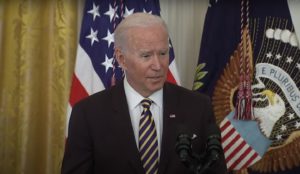State Policy Network releases guide to help states foster K-12 school choice and entrepreneurship
A report from a network of policy groups details seven ways states can support innovation in education that gives families more and better choices.
The report, by Kerry McDonald, Education Policy…

A report from a network of policy groups details seven ways states can support innovation in education that gives families more and better choices.
The report, by Kerry McDonald, Education Policy Fellow for the State Policy Network, follows over two years of educational disruption during the COVID-19 pandemic, in which parents nationwide lost faith in the public school system and sought alternatives such as Christian schools, homeschooling and less common educational models.
In fact, McDonald calls 2021 the “year of school choice,” as education entrepreneurship thrived, “triggering the creation of new private schools, charter schools, virtual schools, microschools, learning pods, and similar learning models.”
In addition to school choice policies that let families use state education dollars outside of a locally zoned public school, McDonald identifies seven ways states can support education entrepreneurship, particularly for schools with less traditional models.
1. Expand homeschooling freedoms
Although homeschooling is rising in popularity, McDonald found some states still have regulations on homeschool co-ops or learning pods prohibiting the exchange of money or limiting the amount of time co-ops can offer instruction. Continued deregulation of homeschooling and similar learning programs would enable educators to expand their sought-after services.
2. Make it easier to start a private school
Educational entrepreneurs often choose against operating as private schools because of state regulations that make it difficult to launch and limit innovation on curriculum and instruction.
McDonald calls for states to remove or reduce these “regulatory hurdles” so there can be more schooling options on the market.
3. Loosen compulsory school attendance laws
Though they vary by state, compulsory attendance laws are becoming “increasingly outdated,” reflecting the values of traditional school models. Loosening or even eliminating attendance laws would “reduce the state’s role in defining and authorizing what learning looks like,” and allow unconventional learning programs to grow and flourish.
4. Reduce early childhood care licensing requirements
McDonald’s research found new educational models are often encumbered by childcare licensing requirements that are simply not applicable. These schools are neither conventional schools nor childcare facilities and “don’t fit neatly into any pre-existing regulatory boxes.”
“Reducing or eliminating state-level education-related regulatory barriers can help to energize and attract education entrepreneurs,” McDonald writes.
5. Expand exemptions to licensing regulations
While some learning programs such as extracurricular activities are exempt from licensing regulations, new and unconventional school models don’t necessarily qualify for the same benefits. Expanding exemptions would guarantee equivalent programs benefit equally.
6. Create “innovation tracks” for alternative licensing
McDonald suggests states create licensing specifically for unconventional learning programs. This would give programs the credibility and protection of being licensed while still ensuring freedom and flexibility.
7. Ease zoning restrictions
Many educational entrepreneurs struggle to find an appropriate space for their program, since commercial real estate “often lacks outdoor space for children’s play and is frequently located on busy main streets or in business parks that may not be ideal for children’s learning and development.”
Relaxing zoning restrictions could help programs find spaces that are appropriate for their size and structure.
As parents and many educators continue to innovate and multiply educational alternatives to the status quo, state regulations and policies are falling behind, suggests McDonald. But through its policy guide, State Policy Network offers numerous practical ways policy makers can boost the educational innovation brought on by the pandemic.



